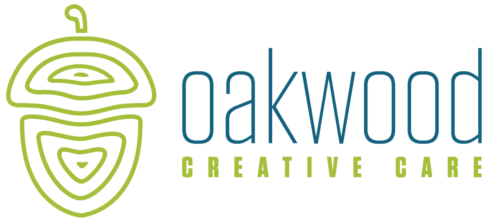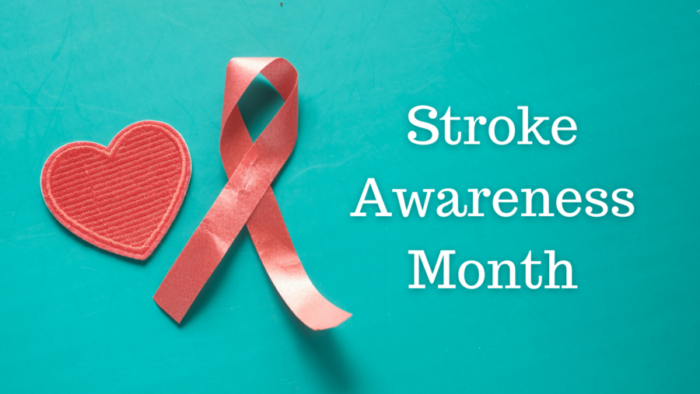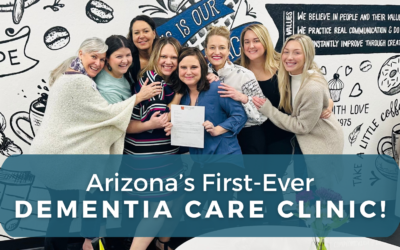For over 40 years, Oakwood Creative Care has been proudly dedicated to treating the mind, body, and spirit of seniors living with cognitive and physical challenges, including impairments resulting from a stroke. In 2022, the C.D.C. identified stroke as a leading cause of serious long-term disability, with reduced mobility occurring in more than half of stroke survivors aged 65 years and older.
In honor of Stroke Awareness Month, we are sharing these essential need-to-know facts about the different types of strokes, their symptoms, and what to do if you suspect that you or a loved one may be having a stroke. With this information, Oakwood hopes to continue bringing forth awareness and support to stroke survivors and caregivers by encouraging others to act F.A.S.T. and share lifesaving information specifically curated to prevent and treat stroke.
A Leading Cause Of Death
As the fifth leading cause of death in the United States, an estimated 795,000 Americans experience a stroke each year. Being widely dependent on a person’s medical history, the Centers for Disease Control and Prevention reports that 1 in 6 deaths from cardiovascular disease was due to stroke, and 1 in 4 cases occurred in patients with a pre-existing history of stroke. Most importantly, The American Stroke Association reports that about 80 percent of strokes can be prevented with the right tools and information.
The American Stroke Association reports 80% of strokes can be prevented
What Happens To The Brain During A Stroke?
A stroke occurs in the brain when a blood vessel responsible for carrying oxygen and nutrients to the body’s control center becomes blocked by a clot or ruptures. When this happens, part of the brain becomes restricted from receiving the proper amount of oxygen and blood flow, causing the cells in that area to die. As a result, that part of the body’s capabilities becomes hindered with respect to the portion of the brain where blood flow is restricted.
Are There Different Types of Stroke?
Every stroke is different, making the signs and recovery post-stroke unique to each person. While each stroke results from restricted blood flow to the brain, there are various types of stroke, and knowing more about each type could mean the difference between saving a life and improving the outcome. The following includes the most common types of stroke:
Every stroke is different, making the signs and recovery post-stroke unique to each person. While each stroke results from restricted blood flow to the brain, there are various types of stroke, and knowing more about each type could mean the difference between saving a life and improving the outcome. The following includes the most common types of stroke:
Ischemic Stroke:
Accounting for 87% of all strokes, an ischemic stroke occurs when a blood vessel becomes clotted and restricts blood supply to the brain.
Hemorrhagic Stroke:
When a weakened blood vessel ruptures, blood from an artery suddenly begins bleeding into the brain, causing a hemorrhagic stroke.
Transient Ischemic Attack:
Also known as a “mini” stroke, this is caused by a serious temporary clot and results in a brief episode during which parts of the brain do not receive enough blood. Because the blood supply is restored quickly, brain tissue does not die, but these attacks are often early warning signs of a stroke and should be taken seriously.
Silent Stroke:
Silent cerebral infarction (S.C.I.), or silent stroke, is a brain injury likely caused by a blood clot that interrupts blood flow in the brain. It’s a risk factor for future strokes and a sign of progressive brain damage.
How Are Cognitive & Physical Function Affected?
To understand which part of the body might be impacted by a stroke, think of it like looking at a photo. When inspecting a photo of yourself, you will find that the right side of your body is pictured on the left side of the photo, and the left side of your body is pictured on the right. The same can be said for the brain’s operations: the left side of the brain is responsible for controlling the right side of the body, and the right side of the brain is responsible for the left side of the body.
While this might sound confusing, we have created this diagram to demonstrate better how either side of the brain is responsible for sending signals to opposite sides of the human body:
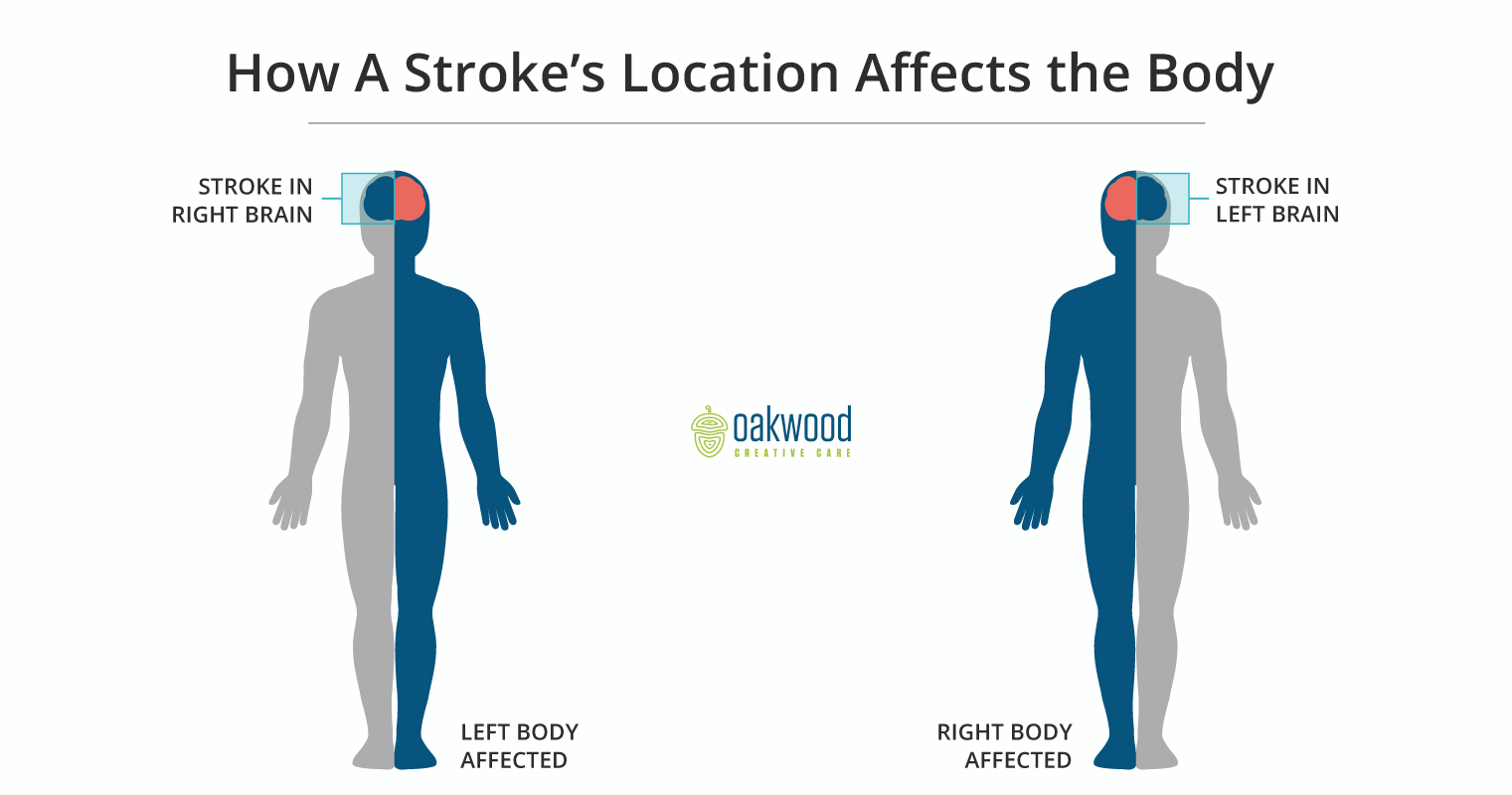
Know The Warning Signs: Think F.A.S.T.!
If you believe you or your loved one may be experiencing a stroke, time is of the essence! The sooner a stroke is treated, the more likely a person is to face a better outcome. In fact, the American Stroke Association reports that stroke patients who are treated within 90 minutes of their first symptoms were almost three times more likely to recover with little or no disability! Learn to think F.A.S.T. with these quick steps meant to help you spot a potential stroke early on:
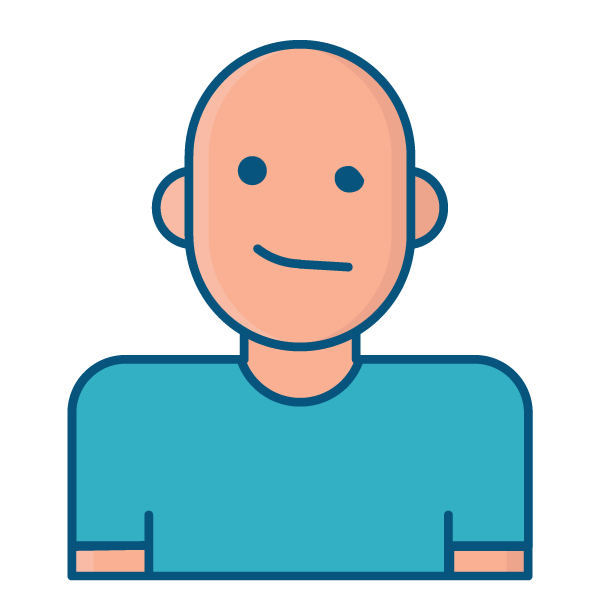
F = Face Drooping:
Does one side of their face droop? Does that side feel numb? Ask them to smile to check to see if their smile looks uneven.
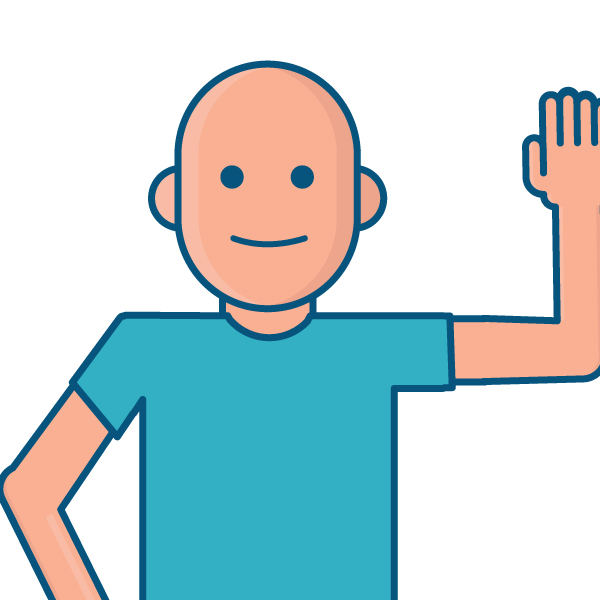
A = Arm Weakness:
Is one arm weak or numb? Ask them to raise both arms at the same time. Are they unable to raise both arms at the same speed, or does one arm drift downward?
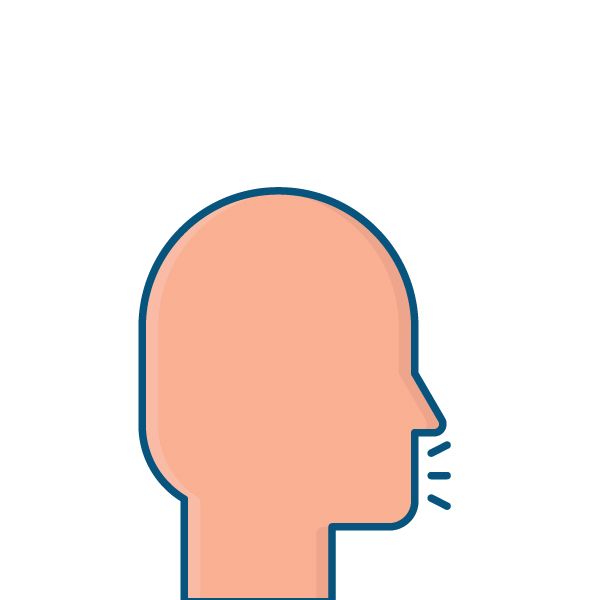
S = Speech Difficulty:
Is their speech slurred?
!!!
T = Time to call 911!
The sooner treatment is received, the better the outcome!
Remember that not all cases of stroke are exactly alike. If you are worried your loved one may be experiencing a stroke but do not exhibit all of the signs outlined in the F.A.S.T. method, the American Stroke Association suggests keeping your eye out for any sudden onset of the following symptoms:
- Numbness or weakness of the face, arm, or leg, especially on one side of the body
- Confusion, trouble speaking or understanding speech
- Difficulties with vision in one or both eyes
- Difficulties walking, dizziness, loss of balance or coordination
- Severe headache with no known cause
When In Doubt, Get Them Checked Out!
A stroke can be treatable, but the outcome can depend on how quickly your loved one receives support. Even if their final diagnosis rules out a stroke, it is always better to have your loved one examined when concerning symptoms arise, rather than risk missing the potential opportunity for medical interventions if your loved one is indeed having a stroke!
Recovery from a stroke can vary from person to person. Oakwood Creative Care is making a difference by ensuring loved ones who have survived a stroke and are experiencing cognitive or physical challenges still have the opportunity to experience a life full of dignity and purpose beyond their diagnosis.
